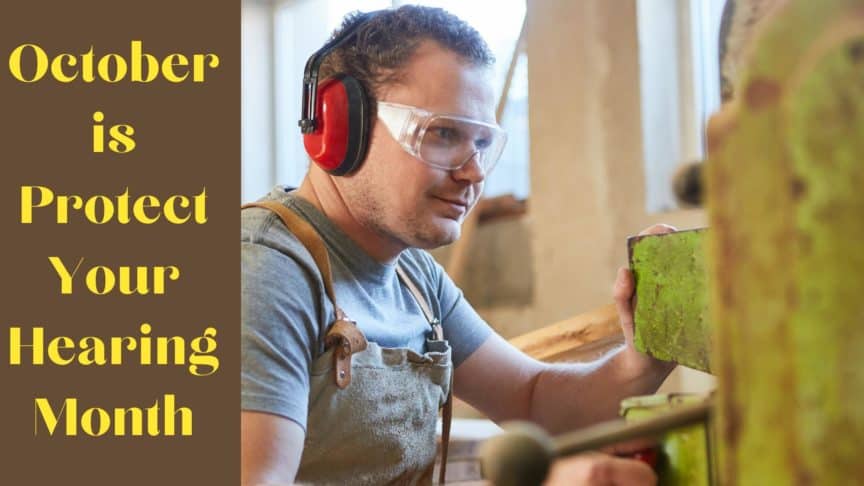- How to Care for Infants With Hearing Loss - April 15, 2024
- Hearing Aid Tips for Runners - April 5, 2024
- Overcoming Misconceptions Around Hearing Aids - March 27, 2024
The leaves are changing as October rolls into full swing. Along with the presence of pumpkins on doorsteps, and ghosts and ghouls on porches, October marks Protect Your Hearing Month. This National Campaign is led by the National Institute on Deafness and Other Communication Disorders (NIDCD) to raise awareness and educate about the risk loud noise poses to our ears. Understanding when and where we are exposed to loud noise can help us protect our ears for now, into the future.
When is Sound Too Loud?
Sound is measured in decibels. This isn’t just the volume or intensity of sound but based on human loudness perception. A normal conversation registers at around 60 dB, which is in the safe listening limits. For comparison city traffic can easily reach 85dB. We can listen to a sound at this level for about 8 hours before it starts to damage our ears, however, at just four decibels more, the time it takes for the same damage to occur is just 4 hours. An increase of 10dB is perceived as an approximate doubling in loudness but represents a tenfold increase in sound power. As the decibels creep up, sound can damage our ears before we even know it!
Occupational Noise Exposure
The workplace is one of the most common places where people are exposed to sound for extended amounts of time. The Centers for Disease Control (CDC) reports that Occupational hearing loss is one of the most common work-related illnesses in the United States. Each year, about 22 million U.S. workers are exposed to hazardous noise levels at work. However, due to safety mandates, employers must provide hearing protection to their employees at no cost to them. This means, it is up to you to make sure you wear hearing protection and wear it right.
Other Sources of Noise Exposure
The NIDCD reports that nearly one in four (24 percent) of U.S. adults aged 20 to 69 years has features of his or her hearing test in one or both ears that suggest NIHL. However, of those reported More than 1 in 2 US adults with hearing damage from noise do not have noisy jobs, which means that many who have suffered NIHL are caused from recreation. If you are a carpenter in your spare time, a power tool can reach 90dB or more and many don’t feel they need to wear hearing protection for this. Perhaps you enjoy motorboating or motorcycling. The sound of the highway and all the other engines can cause subtle damage to your ears over time.
Personal Listening Devices
However, one of the biggest culprits damaging ears of a younger generation are headphones. Personal listening devices with headphones send sound directly to your ears at decibel levels which can reach 100-110dB. At 100 decibels, damage can occur in about fifteen minutes, but at 110dB it takes only one minute. Make sure to limit the amount of time you listen to headphones and take care to lower the volume. A good rule of thumb is: don’t turn up the volume of headphones past 60% of its volume potential. This can ensure that the volume doesn’t reach dangerous decibels. Many have also found protection in using noise canceling headphones. These headphones cancel out background noise, so you won’t be encouraged to turn up the volume.
Protecting Your Hearing
One of the best things you can do for your hearing is to know the decibel levels in the places you frequent the most. It may not just be at work that you are at risk but on your commute or in your own home. Sometimes one appliance like an air conditioner isn’t enough to damage our hearing but running two or more appliances easily passes the safe listening threshold. Avoid running the dishwasher, washing machine and air conditioner all at once. It may also help to put curtains in your windows and carpets on your floor to absorb inside and outside sounds. Use a decibel reader available on most smartphones to detect the decibels levels in your space. If the level exceeds 85, make sure to wear earplugs or protective headphones. These can lower decibels from 15-33dB.
Treating Hearing Loss
If you suspect you have some hearing damage, contact us and schedule a hearing exam. We can diagnose your hearing ability and help you find the best solution for you. Contact us today to schedule an appointment!

